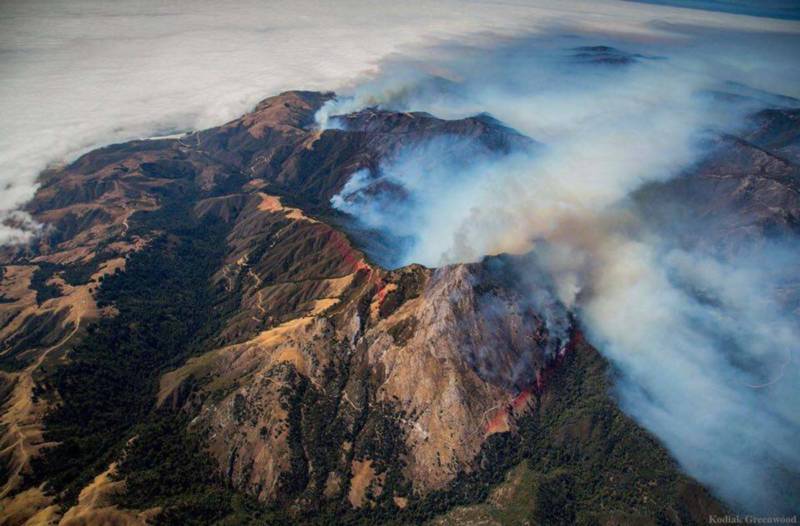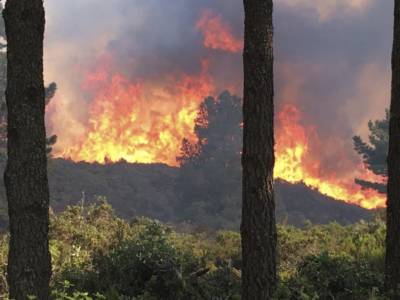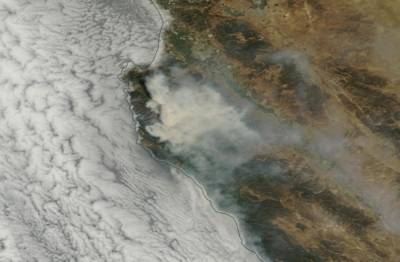/photo/1
Update, 9 a.m. Monday, Aug. 1: The Soberanes Fire continues to chew through rugged, drought-stressed terrain along the northern Big Sur coast, exacting a rising toll in property damage.
Fire managers said that as of Monday morning, the fire has burned nearly 41,000 acres -- about 63.4 square miles, an area about three-quarters the size of Oakland. The blaze is 18 percent contained and has destroyed 57 homes and 11 outbuildings since it began in Garrapata State Park on July 22.
The blaze threatens as many as 2,000 more homes, Cal Fire says. Several hundred people in the area -- inland and southeast of the town of Carmel, have been forced to leave their residences as the fire has spread.
An extraordinarily large force of fire personnel -- nearly 5,300 people -- has been deployed to contain the blaze. Fire managers said last week that full containment could take until Aug. 31; they added over the weekend that in the worst case, the blaze could grow more than fourfold from its current area and reach 170,000 acres.
If that scenario comes to pass, the Soberanes would join two other Big Sur fires as among the largest in modern California history. The Marble Cone Fire, a lightning-sparked blaze, torched 177,866 drought-desiccated acres in 1977. The Basin Complex Fire burned 162,818 acres in 2008.
On its southern flank, the Soberanes Fire has burned into the footprint left by the Basin conflagration. Fire managers have commented that the fuels in the area, including fallen logs and dead or dying standing trees called snags, are heavier than expected for an area that burned so recently.
Among those concerned about the fire's impact are grape growers and winemakers. According to KION, the local CBS outlet in Salinas:
Monterey County's wine industry is worth more than $100 million. Even though Carmel Valley only produces one percent of the county's wine, the fire could shake things up.
The Soberanes Fire is burning seven to eight miles away from the nearest vineyard in Carmel Valley, but it carries a more immediate threat.
"We have to worry about something called smoke taint, which is when ash and smoke affects the skins of the grapes. And then if it affects the skins of the grapes, it can affect the wine," said Kim Stemler, executive director of Monterey County Vintners and Growers Association.
It's unclear if it will happen but if it does, there are ways in the production line where it can be treated.
"Most of the grapes in Carmel Valley have not gone through veraison," Stemler said. "Veraison is where the grapes change colors. After veraison, they're really susceptible to smoke taint, so since it's still really early, it's a good sign."


